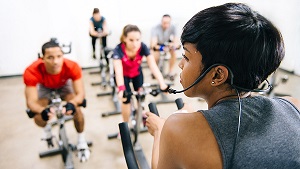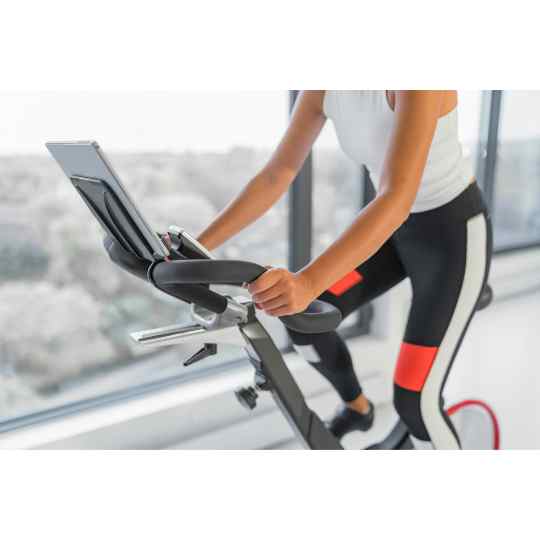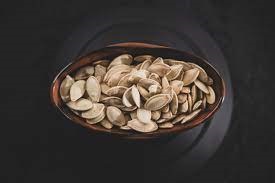
High-Intensity Interval Training (HIIT) is not just a fitness trend; it’s a proven method to supercharge your cycling routine, elevating both strength and endurance. This article delves into the world of HIIT cycling workouts, offering insights, practical tips, and a roadmap to propel your fitness journey to new heights.
1. Introduction: Unleashing the Potential of HIIT Cycling
Craving a workout that delivers maximum results in minimal time? Look no further than HIIT cycling! This innovative approach combines the heart-pumping intensity of High-Intensity Interval Training (HIIT) with the dynamic energy of cycling, creating a fat-burning, muscle-building powerhouse.
HIIT cycling alternates between short bursts of all-out effort followed by strategic recovery periods. This dynamic approach keeps your metabolism fired up throughout the workout and even after, thanks to EPOC (Excess Post-exercise Oxygen Consumption). Imagine torching calories long after you dismount!
The benefits of HIIT cycling extend far beyond calorie burning. This training method also improves cardiovascular health, boosts endurance, and sculpts lean muscle mass – all in a shorter time commitment compared to traditional cardio sessions.
Ready to unleash your fitness potential? Stay tuned for the next sections where we’ll dive deeper into the science behind HIIT cycling, explore sample workout routines, and provide practical tips to get you started. So ditch the long, tedious cardio and embrace the efficiency and effectiveness of HIIT cycling. It’s time to ignite your fitness journey!
2. Understanding HIIT: The Science Behind the Sweat
This section provides a brief overview of HIIT, explaining the science behind this workout methodology. It explores how short bursts of intense effort followed by brief rest periods can trigger physiological adaptations that lead to enhanced fitness levels.
3. The Cycling Advantage: HIIT on Two Wheels

Cycling, a low-impact yet highly effective exercise, becomes the focus here. The article discusses why cycling is an ideal platform for HIIT, leveraging the natural motion of pedaling for a full-body workout that engages various muscle groups.
4. Benefits Beyond the Bike: Strength and Endurance
Delving into the core theme, this part explores the dual benefits of HIIT cycling—increased strength and enhanced endurance. It elucidates how these improvements go beyond the workout, influencing overall fitness and daily activities.
5. Creating Your HIIT Cycling Routine: A Step-by-Step Guide
Practicality is key. The article provides a step-by-step guide on creating a personalized HIIT cycling routine. It covers variables like interval duration, intensity levels, and the optimal balance between work and rest periods.
6. Power Moves: Incorporating Strength Training
To augment strength gains, this section introduces the concept of incorporating strength training into your cycling routine. It explores specific power moves that target key muscle groups, enhancing both cycling performance and overall strength.
7. Endurance Boosters: Pacing for the Long Haul
Endurance is not just about speed; it’s about pacing. The article offers insights into pacing strategies during HIIT cycling workouts, ensuring that you build the stamina needed for sustained performance over longer durations.
8. HIIT for All: Adapting to Fitness Levels
Whether you’re a seasoned cyclist or a beginner, HIIT can be adapted to various fitness levels. This part of the article explores modifications and progressions, making HIIT cycling accessible to individuals at different stages of their fitness journey.
9. Gear Up: Essential Equipment and Safety Measures
Cycling safety is paramount. The article discusses the essential equipment needed for HIIT cycling, emphasizing the importance of proper gear, bike maintenance, and safety measures to ensure a secure and effective workout.
10. Tracking Progress: Metrics and Motivation
To maintain motivation, tracking progress is crucial. This section explores metrics such as distance, speed, and heart rate, providing a roadmap for monitoring improvements and staying motivated throughout your HIIT cycling journey.
11. Beyond the Bike: Complementary Fitness Practices

While HIIT cycling is a potent workout, complementing it with other fitness practices enhances overall well-being. The article suggests complementary exercises and practices that synergize with HIIT cycling for a holistic fitness approach.
12. Conclusion: Ride Strong, Ride Far
The conclusion summarizes key takeaways, reinforcing the idea that HIIT cycling is not just a workout; it’s a journey towards increased strength and endurance. It encourages readers to embark on this empowering fitness adventure, pushing boundaries and reaching new heights.
13. FAQs
What are power pedals and how do they benefit HIIT cycling workouts?
Power pedals are cycling components that measure the amount of force you apply to the pedals, translating it into watts. During HIIT cycling, power pedals provide real-time data on your effort, allowing you to precisely target power zones for optimal training effects. This data helps ensure you’re pushing yourself during high-intensity intervals and maintaining the right pace during recovery periods.
Are power pedals necessary for HIIT cycling?
While not essential, power pedals offer significant advantages for HIIT cycling. They elevate your workouts from feeling-based to data-driven, ensuring you train within the most effective power zones for your goals. However, HIIT cycling can still be effective using heart rate or perceived exertion as metrics.
What are the benefits of using power pedals with HIIT cycling?
- Targeted Training: Power data helps you hit specific power zones crucial for building power, increasing endurance, and burning fat.
- Improved Consistency: Maintaining consistent effort during intervals is easier with power data, leading to more productive workouts.
- Performance Tracking: Monitor progress by tracking your power output over time, allowing you to gauge progress and adjust training plans.
- Reduced Risk of Overtraining: Real-time data helps you avoid overexertion during high-intensity intervals.
What considerations should I make before purchasing power pedals?
- Compatibility: Ensure your pedals are compatible with your bike’s crankset and cycling computer.
- Budget: Power pedals range in price. Consider your needs and budget to find the best fit.
- Features: Some offer additional features like cadence measurement or left/right leg power data.
Are there any alternatives to power pedals for HIIT cycling?
Yes, heart rate monitoring and perceived exertion are alternatives. However, power data provides a more objective measure of effort compared to heart rate, which can be influenced by external factors. Perceived exertion can be subjective and prone to misjudgment.



